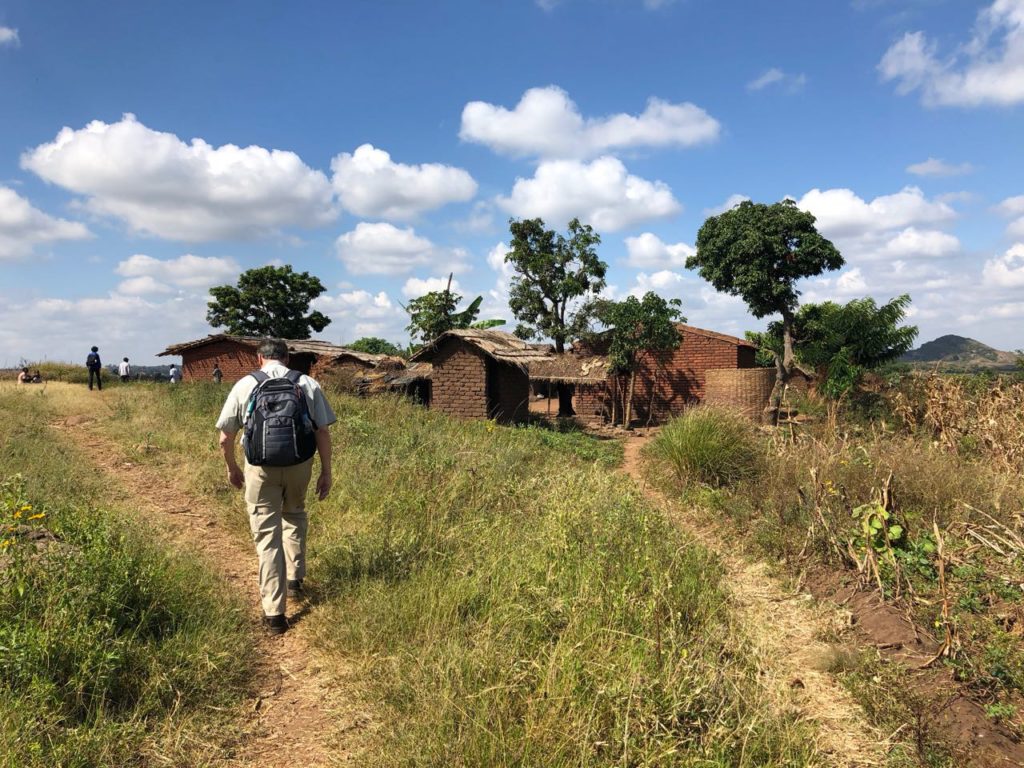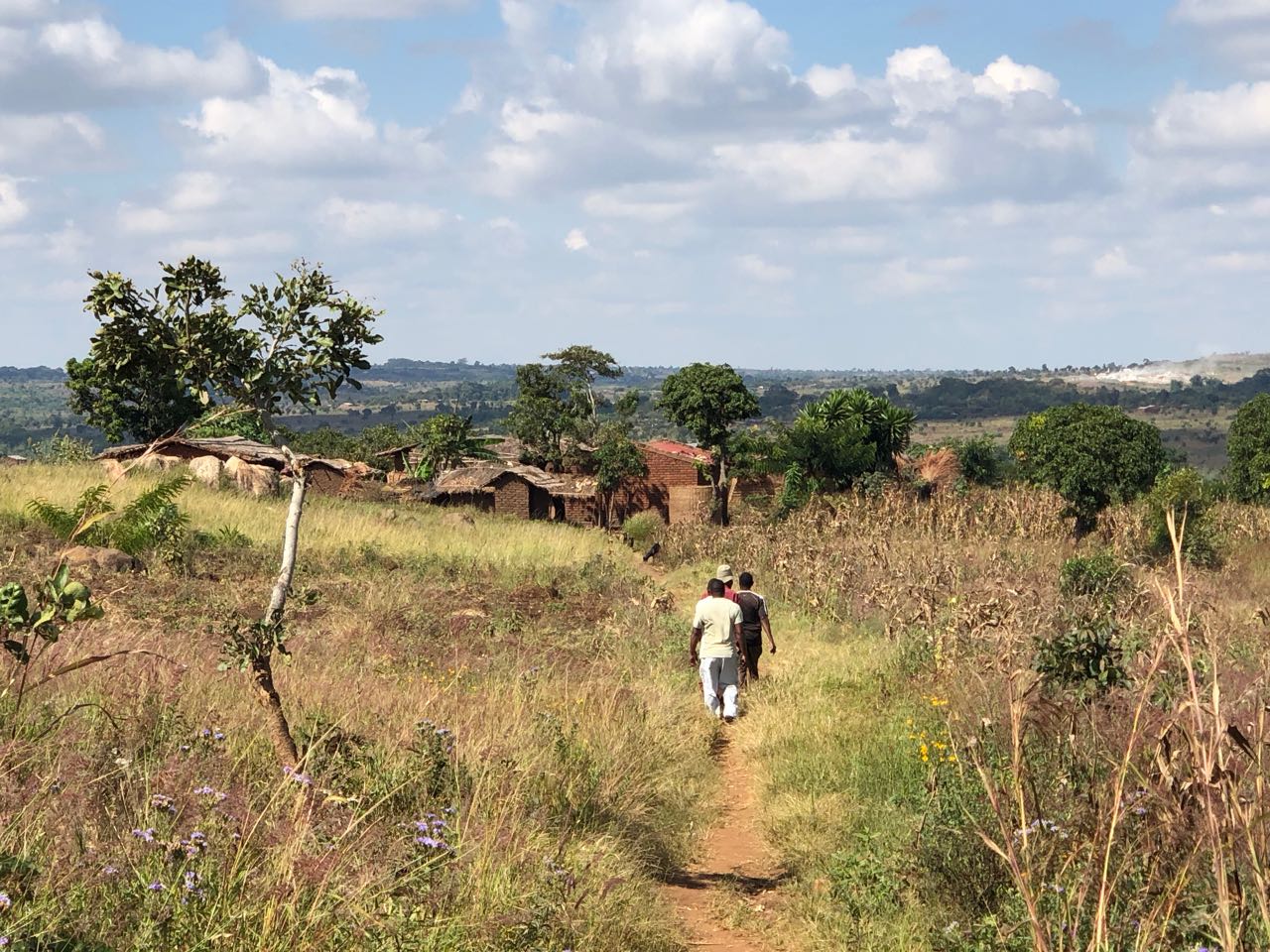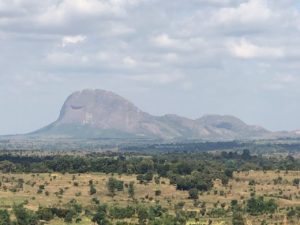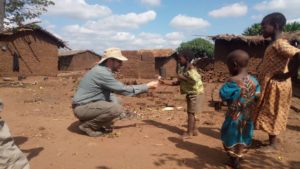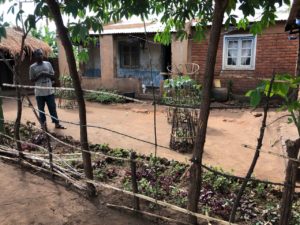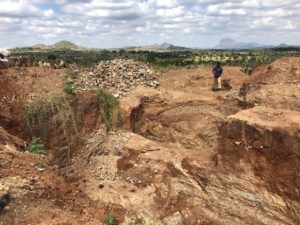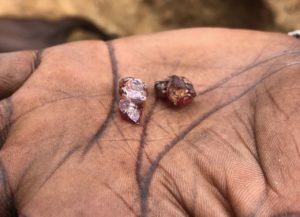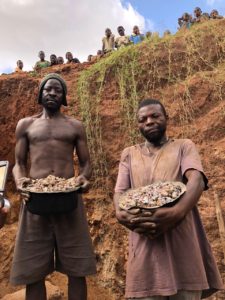Early in our May 2018 trip to Malawi, we were invited to visit a small farming & mining village in the Ntenje region, roughly an hour south of Lilongwe. The villagers had discovered rhodolite garnets in their fields and were actively mining in between farming seasons.
From the highway, the village was no different from any other small farming settlement: a few roadside entrepreneurs selling quick meals or food staples, brick and mortar buildings surrounded by maize fields, women laying out freshly milled flour to dry, men working various farm tasks or sharing gossip at the road stands. This particular village was on a small hillside giving it a fantastic view of the distant, smiling Mt. Ngala (“Mountain with a mouth”).
We were received by some men from the village in that polite, cool manner of people receiving strangers who may be trying to sell something. But the tentative welcome quickly transformed into a relaxed enthusiasm as lollipops were handed out to anyone under 4 foot tall. (There is nothing like candy to break intercultural ice.) After introductions and small talk, the village leaders showed us to the mining area.
We were lead past their flour mill, brick making area and their main residential area. The dusty red dirt and browned maize stalks contrasted sharply with the sharp white maize flour spread out for a final drying. Many of the brick houses had small, very neat gardens surrounded by well made fences; I felt immediately guilty about how much I had neglected my own veggie plot back in NY. These people obviously take pride in their homes and work.
The garnet mine was another quarter to half mile through their groundnut and maize fields. Our guides, and a host of somewhat sticky children, lead us the miners waiting at their deepest digging. Approaching the mine site, I had the impression the villagers were increasingly anxious about what we might say. No one made a secret of the fact that they were farmers trying to learn gemstone mining on a per-shovelful basis.
I was surprised at what I saw. From the description, I had anticipated a new mine pit, maybe 8-10′ deep. This pit was much deeper, dangerously so. I’d guess the digging to be around 30 foot deep, possibly more with the piled debris on the edges of the pit. The overburden and dirt walls seemed stable all the way to the rotted-granite bottom. But everything was very dry; I couldn’t help wonder how it would all change when the rains started.
The miners first showed us some almandine-pyrope or rhodolite nodules collected from in between the maize rows. They appeared to be small, 1-2g well rounded alluvial garnet nodules. We later learned from our guide that the farmers had been picking these nodules up for quite a long time, but didn’t understand where the red stones were coming from. Early on, one of the leading theories was that the nodules came from the sky during the rains; after all, it was after a good, hard rain when the red stones were seen glowing in contrast to the surrounding mud. Once that idea was corrected, the farmers had turned to digging in earnest.
The main digging had two levels, generally divided by the type of garnet they were finding. At the upper level, between ground level and about 10′, they were finding really fine pink-purple 0.5g nodules in brown-red dirt. These seemed to be alluvial, but with less surface wear than the surface nodules. After seeing these, we suddenly had very high hopes for the deeper deposit.
The next level of the mine was rotted granite. Given the heavy hand tools left on the mine floor, this level was hard going. We didn’t go to the deepest level of the open pit, but they miners were very happy to show us the large garnet nodules they were finding.
After seeing the quality nodules from the surface and the wonderfully colored upper level garnets, I was very surprised to see the miners proudly presenting buckets of large purple-pink, heavily fractured garnet nodules in matrix. It was obvious the deeper nodules contained nothing but pretty colored garnet shards.
There was an awkward pause. All of the gem cutters and gemologists there knew immediately that the production from the deeper digging was little more than abrasive. But the miners had obviously worked hard and were proud of what they had found. I think it was one of our translators who broke the tension. It had to be embarrassing and disappointing for them, but the miners and villagers were gracious and encouraged us to share whatever knowledge we could with them.
It was very apparent that our plans for a general introduction to gemology was out of scope. The need here was not being able to separate doubly from singly refractive stones, but for understanding how to judge quality in gemstones and where best to find them.
Eventually, everyone gathered under a nearby tree. I was surprised to see not just the miners, but men, women and children of all ages waiting to hear what we had to say. We explained some of the basics of alluvial deposits; where their surface garnet nodules likely came from and where they were likely to find more. Then we discussed what buyers look for in gem rough, how they might be able to high grade their finds to realize the best return and what kinds of roughs might be best offered to bead makers. (That’s my friend Roger Dery explaining alluvial deposits to the group.)
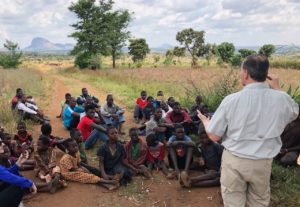
As we talked, I could see their guard dropping. They understood we were there to help, not demean or somehow take advantage of them. It was clear they were eager to learn, to improve, to maximize what they were doing. It was amazing to see the smiles grow as they began to understand what we were teaching and realize it was all well within their abilities.
I like to think, and sincerely hope, that our offering a little training & insight was more valuable to the farmer-miners than any money we might have spent on rough with them. Maybe someday, I’ll get the chance to go back and find out.
